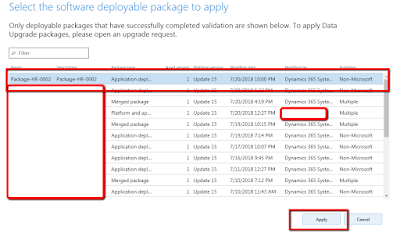D365FO Database Synchronization
In Microsoft D365FO there are 3 ways to synchronize the database
Full synchronization
Synchronization after building of packages
DB sync on project build
Full synchronization
To perform a single full database synchronization Open Visual Studio and click on Dynamics 365 Menu and click on the synchronized database...
Like below
Now click on synchronize
Synchronization after build of packages
There is an option available to sync the database with the build model feature, In this option DB with start sync after the building of the model...
Navigation
Go To > Dynamics 365 > Build model
Now select model/models then click on the 2nd tab and Mark checkbox of the synchronized database.
DB sync on project build
The properties of a project in Solution Explorer, there is property available synchronized database of every build of the project.
Support Faryal's Cusine

























